Building a shared understanding of complex issues is key to doing work in the social impact space.
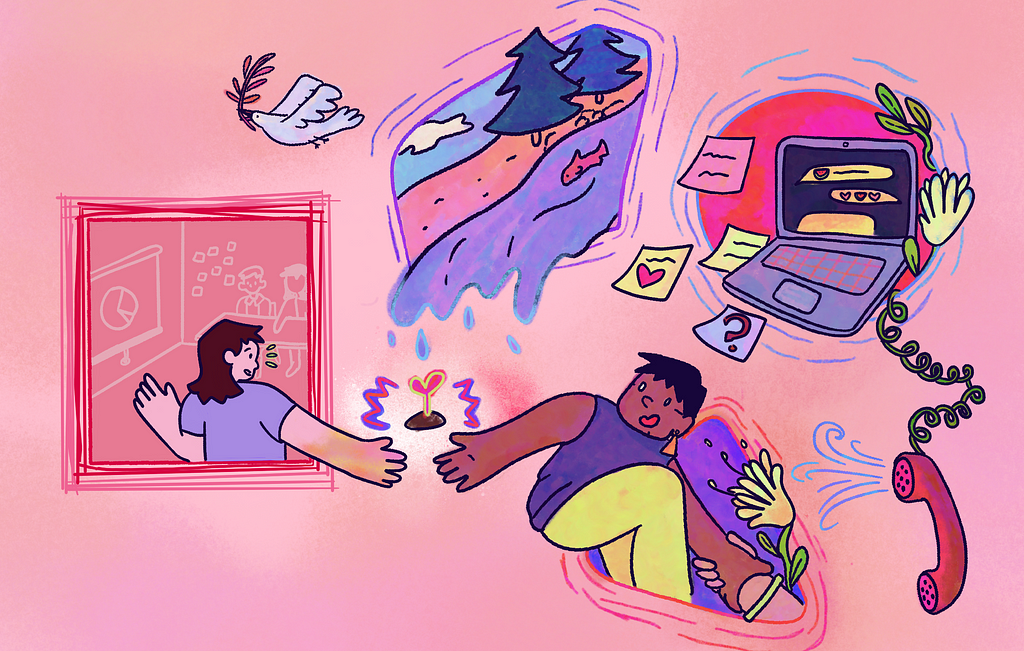
Close your eyes and picture what a facilitator looks like. What image comes to your mind?
For many, I bet you see a person standing in front of a group, effortlessly guiding people through a series of creative exercises. AKA someone running a workshop.
While yes that is a facilitator, when we do design work in collective and community spaces the image we hold of a facilitator needs to expand.
After speaking to other professionals in social impact design and drawing from my own experiences in the industry, I believe it’s time to shift facilitation from an event-specific role to a principle aspect of how we design.
So what does it mean to “be a facilitator”?
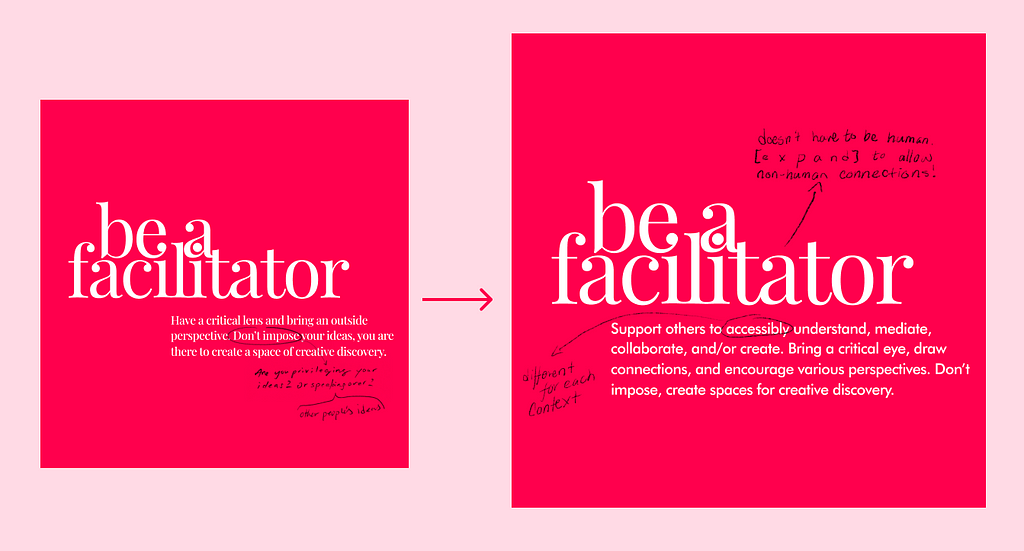
For context, “Be a Facilitator” is the first principle of Design for Collective Spaces (DCS), a design approach that helps people create projects that care. And I’m currently on a mission to collaboratively refresh DCS’s 12 principles, which you can read more about here. If you’re just interested in learning about facilitation’s place in design, keep reading!
When DCS first came up with this value in 2021, what a facilitator is was not directly defined. We only went into what facilitation looked like. Mainly talking about designers using their creative abilities to spark discussion, less about imposing their own ideas.
This time around, I want to correct our past’s lack of context and give you a definition of a facilitator. This is just my opinion formed from experience and conversations, but I see it as a definition that applies beyond design as well:
A facilitator is someone/something that supports others to accessibly understand, mediate, collaborate, and/or create.
By having a broad definition of what a facilitator is, a diverse set of interpretations and relations to this role are valued. It takes a page out of Relational Design, acknowledging that no one challenge, community, system or ecosystem is the same. Therefore, how we approach facilitation must be accessible for that situated context and community.
What I like about this definition is that a facilitator and/or the facilitatee can be anyone or anything. It deconstructs the colonial notions that center humans as the only knowledge sharers and includes decolonial / anticolonial knowledge that value non-human relationships.
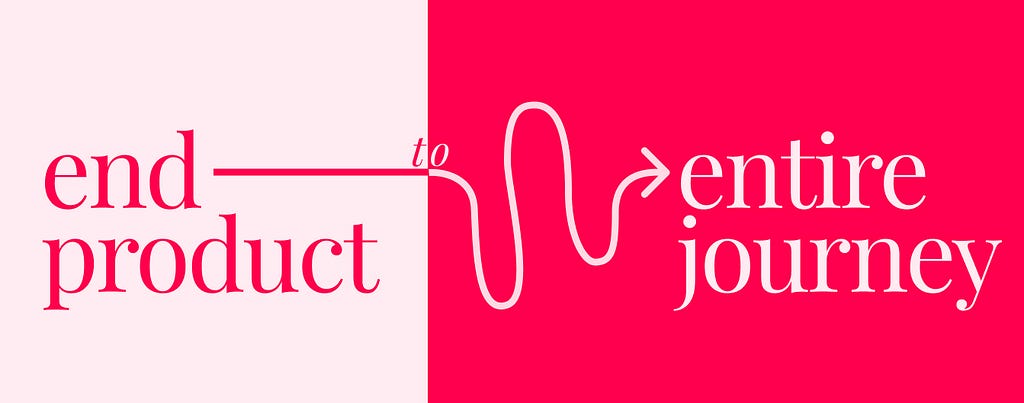
When I bring it back to DCS’s design approach, which looks specifically at the project work we do in community and collective spaces, it’s a call to change focus from end product to the entire journey. It becomes more about the value it provides to the people we are collectively working with and the care we show each other.
And because this project is about refreshing DCS’s design principles, we will be updating our first principle to be defined as:
Be a Facilitator: Support others to accessibly understand, mediate, collaborate, and/or create. Bring a critical eye, draw connections, and encourage various perspectives. Don’t impose, create spaces for creative discovery.
With this, facilitation becomes more of a mindset we step into. Being mindful throughout the design process, we are intentionally creating ways for people to accessibly interact with our work. It validates that, outside of the inevitable workshop, there are other forms of facilitation that are needed when tackling complex social projects.
Note: If you read the original principle, you see that we used the phrase “bring an outside perspective”. After consulting with other practitioners, I decided to remove it, because being an outsider on a challenge doesn’t always impact our ability to facilitate how we tackle it.
Why “be a facilitator”?
When we first wrote this value, it was a direct challenge to the idea of “designer as an expert” that is common throughout the industry. There is this narrative in design that often goes like this:
A community, often an under served one, is struggling with a problem. A designer sees this, observes them for a short period, comes up with an idea in the studio, and then comes back with a solution to the bewilderment and excitement of the community. The problem that no one has been able to figure out before now is solved! All thanks to the designer!
OK, this story might seem a little exaggerated, but it has long been a documented one. but I know each of you reading this likely have seen it play out in your work or can name an example of this happening. While it can be difficult to find exact case studies, check out these examples: PlayPump, One-Laptop-One-Child, the infamous Kony 2012, and arguably many social services.
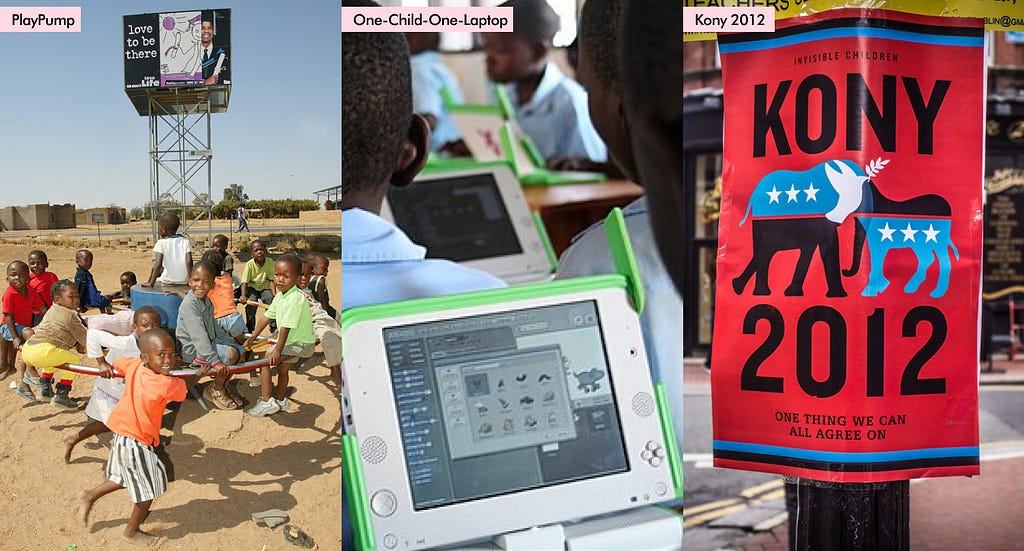
Projects like these often do little to help the communities they target, but instead raise the profile of the designer(s)/agency(ies) that made them. And years later when the projects go inevitably wrong, the publicity has already been gained and communities are left with little resources to hold them accountable.
This same critique can also be made with the current rendition of “co-design”. sahibzada mayed | صاحبزادہ مائد wrote in “The buzzwordification of Co-Design” that “what claims to be a way to democratize our design practices and share power ends up a reproduction of whiteness and coloniality”. And as someone who has spent years in the design education space, I can tell you that what is being taught is often just a different flavour of “designer as an expert” mistakenly rebranded as “co-design”.
This flavour of co-design is often extractive, and really only used in the research and ideation stages. Often with little credit to the communities who come up with the ideas OR worse they have their lives get turned into a soul-less “empathy” inducing persona.
But when it comes to big decisions and recommendations, those are left up to the designers.
As you can probably see, I have a lot of feelings about “designers as an expert” — probably as I myself have been taught to think this way. But when we apply this thinking to social innovation and community work, it is deeply patronizing and colonial. Often hurting communities more than helping them.
I find this mindset especially egregious as many of these projects have white designers at the helm going into under-served Black, Brown, and Indigenous communities all to tell them what they should and shouldn’t be doing. It exemplifies both white saviorism and this idea “well, if these people are living with the problem, they probably don’t know how to solve it”.
While in reality, people often just don’t have equitable access to the resources, time, or needed aid to tackle their challenges.
This is why the shift for designers to “be a facilitator” is so greatly needed. It is time for diverse stakeholders in communities to guide what projects will look like — a designer is just there to help them make sense of it all. And potentially help them get resources.
How do you “be a facilitator”?
Ok, gripes about the industry aside, let’s get into some practical tips of how you can “be a facilitator” in your work.
Before writing this article, I did a call out asking other designers and facilitators how facilitation looks like in practice. Below is a snapshot of their answers from the DCS’s Miro Board.
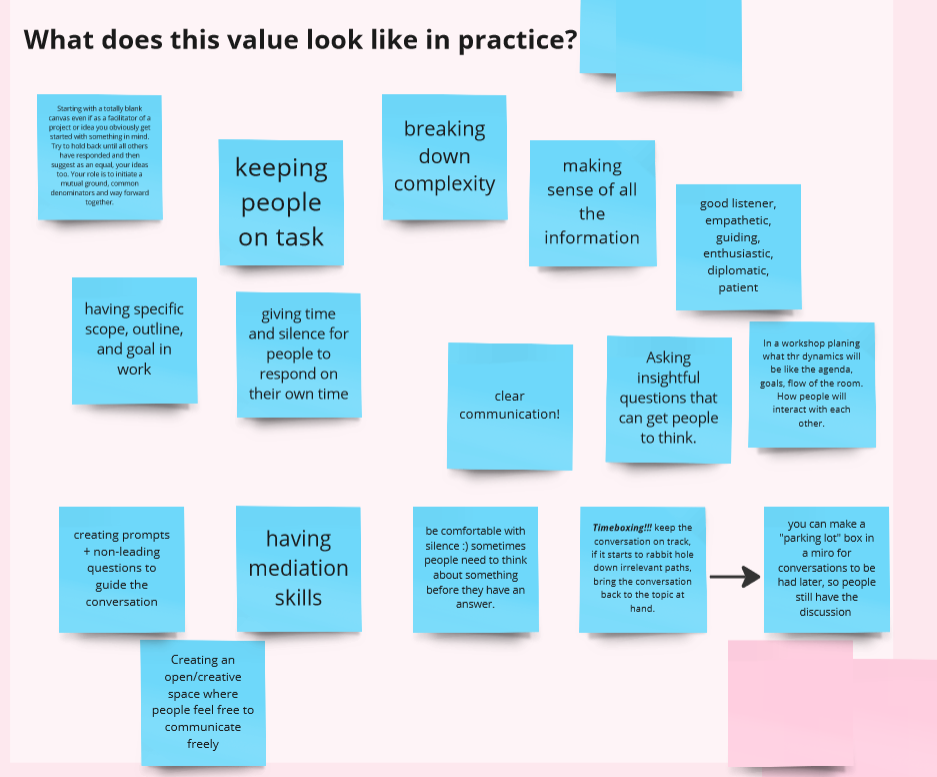
Reflection on people’s answers and informed by my own experience, below are 6practical tips that you can use in your next project to really embrace being a facilitator in your work:
1. Build a shared understanding of the problem space
Knowing the context of your problem space is essential. The history, stakeholders, power dynamics, and current challenges are all interconnected and can inform how you do your project. Not only do you need to understand it, but so do the people you are designing with.
What it can look like:
- Holding a workshop at the beginning AND end of the project to create a visual map of the problem space. (it’s cool to see how your understanding changes over time)
- Documentation that your team can refer to that state the scope of your work, the stakeholders involved, people’s roles, possible opportunities, and challenges. These can be great for people to reference once the project is over, as well.
- Reflection prompts and open-ended discovery questions to aid co-designers in better understanding the challenge.
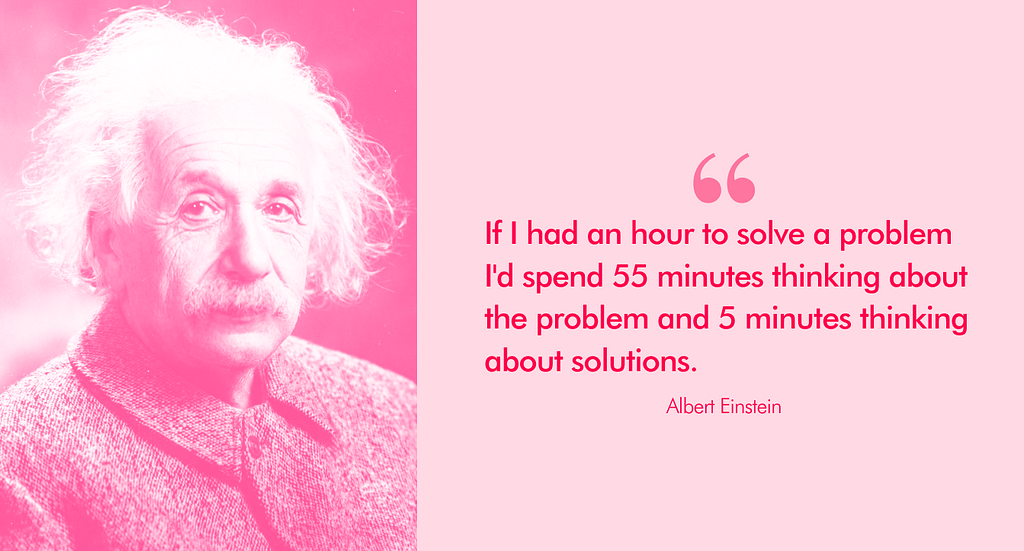
2. Use accessible open communication
Ensure people actually understand what you’re doing and can easily access information about your project. “Plain language is community building” is a quote from writer, Imani Barbarin, that I think perfectly captures why accessible communication is important. Remember, accessibility can be context specific — communicate in ways that works best for your audience.
What this can look like:
- Setting up multiple informal and formal points of contact for people to provide feedback. This can even look like a non-judgemental gossip sesh. (“gossip” has long been a way to share important information)
- Sending out outlines and slides before meetings. Having debrief sessions for people afterwards can also do wonders!
- Giving people time to reflect alone and in a group.
3. Harness the Power of Active Listening & Observation
From my experience, communities have great ideas to solving their own challenges — it is just a matter of you actually listening to them. People often won’t communicate to you outright what they need, but over time and holding space for discussion, words and ideas begin to emerge. It’s a matter of being perceptive to what people are saying, doing, and NOT doing.
What this can look like:
- Spending extended time interacting, helping, and actually connecting with people. As you understand each other more, you build a shared language and trust.
- Recruiting someone on your team who knows the community inside and out. They will already know the context and introduce you to who you need to talk and REALLY listen to.
- Observing how people are already navigating the problem. Take a page out of DIY Urbanism, people often have make-shift solutions to a problem. How could you expand what they are already doing?
[Below is a screencap from Abbott Elementary where an example of above was well showcased. A teacher, Gregory, noticed his students kept on using his office as a place to hang out — often seeking his advice and company. He then noticed they need a space to keep them busy and created the Garden Goofballs]

4. Keep People on Task, but Foster Creative Discovery
Creativity is messy, we need time and space to discover then pull insights. But the one thing about creativity is, well, it means you have to create. One great skill every facilitator needs to know is to keep people on task by providing “timeboxes” to get things done. But be gentle with this, as being too strict can alienate people, so allow for flexibility.
What this can look like:
- Agreeing on a pace together in which your co-designers feel they can properly contribute. Fast pace for these type of design projects can really damage communities and burn bridges.
- Giving people multiple trial runs to practice creating. It is important that people internalize creating then analyze!
- Being clear about flexible deadlines vs. strict deadlines.
5. Be Aware of Power Dynamics and Ethical Concerns
Power dynamics have real implications if people truly share their opinions and ideas. Know what concerns and dynamics exist, be transparent with others about them. We cannot mitigate all harm and concerns, but we can do our best to be proactive and create safer spaces.
What this can look like:
- Having separate spaces for staff/managers/community members to discuss problems and solutions
- Holding meetings in spaces that can help minimize hierarchy (ex. Going to a neutral location, like a garden or rented space)
- Allowing for anonymous feedback
6. Don’t just Guide, Facilitate Learning & Connections
Under this model, facilitation isn’t just about being in a workshop, it’s about passing on skills beyond one event. Build design capacity within the community, it helps people move projects forward without you (this is a good thing). The connections you help foster really have ripple effects.
Remember, often as designers, we are coming from places of privilege. Because this industry often aligns with capitalistic intensives and requires post-secondary education, we have more access to funds, knowledge, and connections. If we are serious about equitable change, we have to facilitate passing on these resources.
What this can look like:
- Providing reasoning, resources, and references behind your work. Create ways people for people to access knowledge during and after your project.
- Embrace the one-on-one session for people curious to learn more. One connection can do wonders for a person, help facilitate that.
- This is a little controversial, but embrace strategic communication. Only tell funders what they need to know (don’t lie, just be strategic), as often they aren’t really into transformative change.

Learning More and Getting Involved.
As I stated before, this article is part of a project I am doing to reexamine and refresh the principles within Design for Collective Spaces. What I wrote here is just a snippet of the feedback I got from other practitioners.
I recommend checking out our collaborative Miro Board for more ideas, questions, and case studies surrounding what it means to “be a facilitator”. I struggled to include everything, especially as I wanted to feature some case studies (cough cough, check out “Big Little Futures”).
But if you liked this article, I highly encourage you to get involved! We will be tackling a total of 12 different principles, so there is a lot of opportunity to share your thoughts on different topics.
Speaking of the different topics, the next principle we will be doing a deep dive on is around how we “centre the most impacted” in our work. So stay tuned, share your thoughts, and let’s build Design for Collective Spaces together!
Acknowledgments and Thank yous
First and forever, a big thank you to the original team behind Design for Collective Spaces! Tracy Chen is an extremely talented product designer and visual artist you who is currently working at Daybreak Studios. Eliza Lim is an detailed orientated and amazing design researcher at Samsung. Corrina Tang is a conscientious and utterly positive service designer for Code for Canada.
Shout out to Zoey Li is so positive, inquisitive, and SUPPORTIVE when it comes to this project. I wouldn’t have been motivated to move it forward without her words of encouragement and offer to host the Miro board!
Thanks to everyone running and in the Impact Cohort by Distributed Design Platform! You gave me a lot of tools and confidence to start this project out.
Lastly, thank you and acknowledgment to Black, Indigenous, Trans, Queer, and Disabled activists who paved the way in social movements. This discipline and how I approach it would not exist without them.
To be a designer is to be a facilitator was originally published in UX Collective on Medium, where people are continuing the conversation by highlighting and responding to this story.
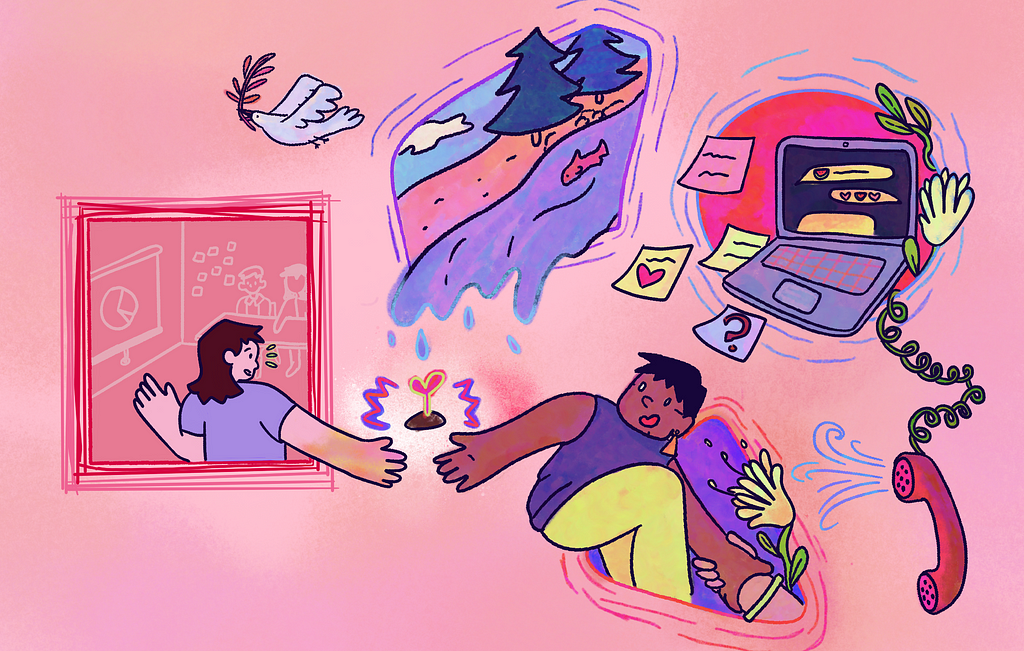
Leave a Reply